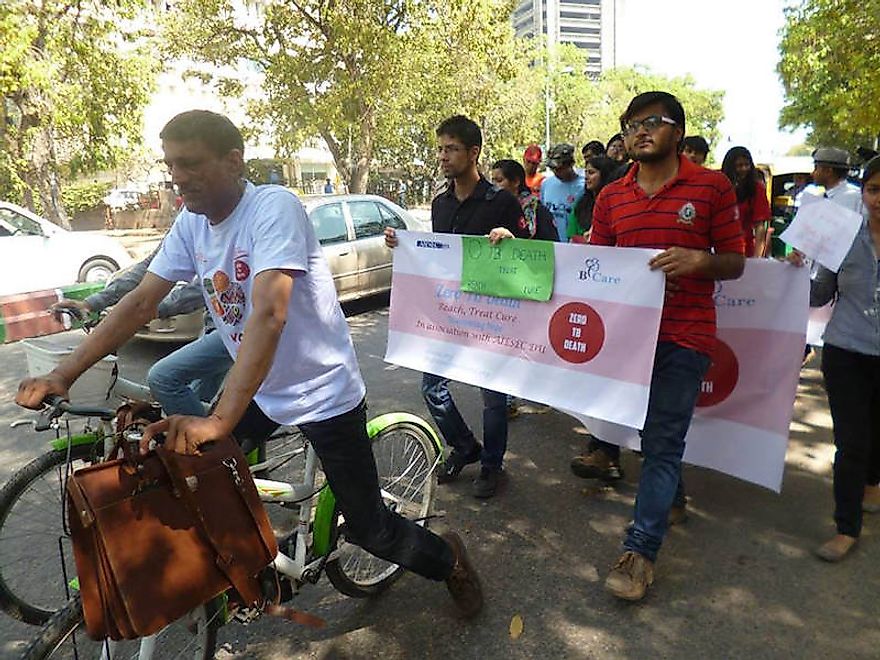The Leading Causes Of Death In India

As per the Indian Constitution, health in India is the responsibility of the state governments of the country. Each state has its unique method of handling this sector and thus huge disparities in the state of public health is observed between Indian states. For example, in Kerala, the infant mortality rate is 12 per thousand live births whereas, in Assam, the number is as high as 56. The life expectancy at birth of people is 63 years for males and 66 years for females. 50% of the population is below the age of 25 years, and there are 943 females per 1000 males according to the last census.
Top Causes of Deaths in India
Cardiovascular Disease
There are many leading causes of deaths in India, and cardiovascular disease has emerged as the top killer that has affected both urban and rural population. Cardiovascular deaths account for 24.8% of total deaths in the country. Primarily, the aged population is affected by this disorder and men are more affected than women. In rural areas, lack of proper medical facilities results in a higher number of deaths as many cases of health emergencies is not met with the medical care needed. Patients with cardiovascular emergencies often die on the way to health care centers or hospitals as remote villages are usually located far-off from such facilities.
Respiratory Disease
The most common respiratory disease asthma is caused due to exposure to allergens in the outdoor or indoor environment, smoking, genetics, and lifestyle and 10.2% of the total deaths are caused due to this disease in India. The absence of proper implementation worker-friendly and worker-safety rules and regulations often expose impoverished workers in factories to allergens in their work environment, triggering asthma in such workers. The higher rates of air pollution in the cities and towns of India also induce asthma in people inhabiting such urban areas.
Tuberculosis
Tuberculosis is an airborne disease, which can spread to other people through the air if the infected person sneezes or coughs, injecting the bacteria into the environment. A lack of proper nutrition often compromises the immune system of patients infected with the tuberculosis bacteria, making them more susceptible to such diseases. High rates of poverty, lack of clean living facilities, improper nutrition and lack of awareness about prevention and treatment of tuberculosis are primarily responsible for the high rates of this disease in the country. Around 10.1% of total deaths are caused due tuberculosis in India.
Health Facilities And Schemes Introduced By The Government
Only 4.2% of the GDP in India is spent towards the healthcare system. There is a wide gap between the rural and urban population in the country in the sphere of access to healthcare facilities. 18% of global deaths are caused in India. As 70% of the rural population lives in rural India, so they just have access primarily to only the government health programs whereas in urban areas many government and private hospitals are available for the public. So, for this, the government has introduced many health schemes like Janani Suraksha Yojana, Central Government Health Scheme, Universal Health Insurance Scheme, National Urban Health Mission and more to improve the state of health in the rural areas of the country.
The Leading Causes Of Death In India
| Rank | Cause of Death | % Of Total Deaths (Age 25-69) |
|---|---|---|
| 1 | Cardiovascular Diseases | 24.8 |
| 2 | Respiratory Diseases | 10.2 |
| 3 | Tuberculosis | 10.1 |
| 4 | Malignant and Other Tumors | 9.4 |
| 5 | Ill-Defined Conditions | 5.3 |
| 6 | Digestive Diseases | 5.1 |
| 7 | Diarrhoeal Diseases | 5.0 |
| 8 | Unintentional Injuries | 4.6 |
| 9 | Intentional Self-Harm | 3.0 |
| 10 | Malaria | 2.8 |











